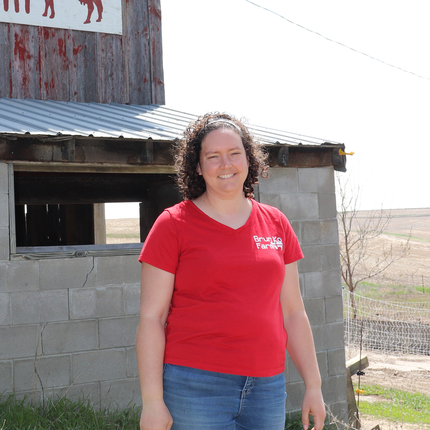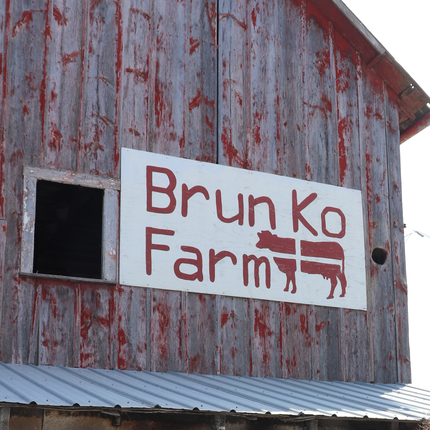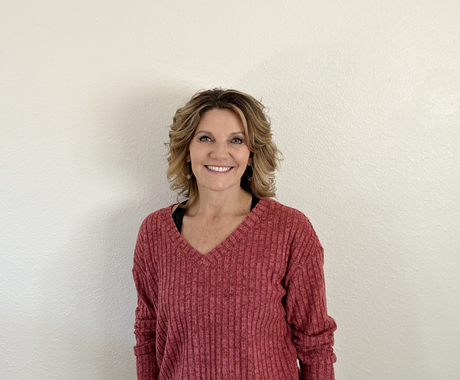Click here to check out the case study.
Angelyn Wang contributed to this story.
Brun Ko Farm outside Exira, Iowa, sprouted from Nathan and Emily Paulsen’s shared passion for all things food. From planting each seed to eating the ripe produce, they take pride in and enjoy every step of their farming journey.
Their farm began to take shape in 2015, when the couple started out with pasture-raised livestock and vegetables.
“We wanted to farm, and it was important for us to grow food that people would eat,” said Emily. “We both grew up with gardens; it's a rewarding experience. There need to be more vegetables in the world.”
They also put a lot of thought into the name chosen for their operation.
“With Danish heritage in both of our families and living in a community that takes great pride in (its) Danish descent, we decided to incorporate that into our farm name,” said Emily. “Our farm began with a small herd of Jersey cattle that will forever be in our hearts. So, the name Brun Ko, meaning 'brown cow' in Danish, holds a lot of significance for us.”
The farmers pieced together their agriculture education through resources from Practical Farmers of Iowa, although they wished there were more programs available for farms as businesses.
“It would be revolutionary if we had a trade school for farming, specifically food farming, because it’s not that simple when you scale up,” said Emily. “You need marketing skills. We teach people how to be plumbers and electricians. It's a whole skill set, you aren’t just born that way. But business advising for beginning farmers is not available.”
Emily and Nathan applied for and received a Choose Iowa grant and a Natural Resources Conservation Service Environmental Quality Incentive Program (EQIP) grant and used the money to finish their fencing and put in a water line.
Today, they grow 30 different vegetables including zucchini, tomatoes, and radishes. They’ve also planted strawberries and fruit trees that aren’t producing yet but hopefully will in the near future. Brun Ko Farm has been home to livestock including beef cattle and heritage breed feeder pigs, as well as bees for making honey.
Emily and Nathan recently moved away from pork because it was hard for them to make a profit, and they are now focusing on chickens. They sell eggs and would like to increase the number of laying hens. They also share sheep with a neighbor and sell cuts of the lamb.
“We may move away from the cows and raise more sheep,” said Emily. “There’s less competition with sheep right now. We are trying to narrow it down so we can figure out what will make us money.”
The Paulsens aren’t in agriculture just for financial reasons; they also give back to surrounding communities by donating their time and produce to Grow Another Row, Cass County.
This program was started in 2020 by a group of local food advocates to encourage residents to grow and share more fresh produce. Anyone is welcome to donate or take items, and Grow Another Row stands are located in various neighborhoods, outside of libraries and low-income apartments, and in outlying communities.
The two closest towns, Elk Horn and Exira, have no grocery stores, and the gas station doesn’t sell milk anymore. There is a Dollar General, but people have to drive 30 minutes to the nearest grocery store.
These challenges are exactly why the Paulsens want to serve their community.
“People can’t afford to pay high prices,” said Emily. “People don’t realize how much it costs in gas and mileage. People can’t make that drive so they rely on food that is available at the convenience stores. With Grow Another Row, you grow your gardens and grow an extra row to donate. No questions asked, share what you can, get what you need. That has been successful, and every year we are adding more stands.”
Emily works behind the scenes, helping the organization when she can and growing produce to donate. Volunteers help move excess produce to different stands.
Nathan and Emily feel easier access and better availability will help shine a spotlight on local foods as a practical and affordable option for customers. Emily hopes to work with a local pastry shop to sell its goods, and she sold through a quilt shop last year.
“It is an extra effort to go to the farm rather than just one store,” said Emily. “You can't hit everybody’s schedule, so we’re partnering with other businesses, trying to have access on multiple days a week.”
Having continuity through the winter would help too, but that’s difficult in a seasonal environment. Weather won’t stop the Paulsens from working toward their goals, however.
“Next year, we hope to put up a high tunnel, and I’ll have more time to focus on the farm with both of our children in school,” Emily said. “My dream is to keep selling to my community, and I would love to be able to sell right off my farm eventually.”
This case study series highlights an innovative local foods access initiative happening in southwest Iowa. It includes a variety of initiatives and projects that can serve as idea-starters to incorporate in other communities. The Center for Rural Affairs is able to assist in developing local food access plans across the region. Click here for more information.







